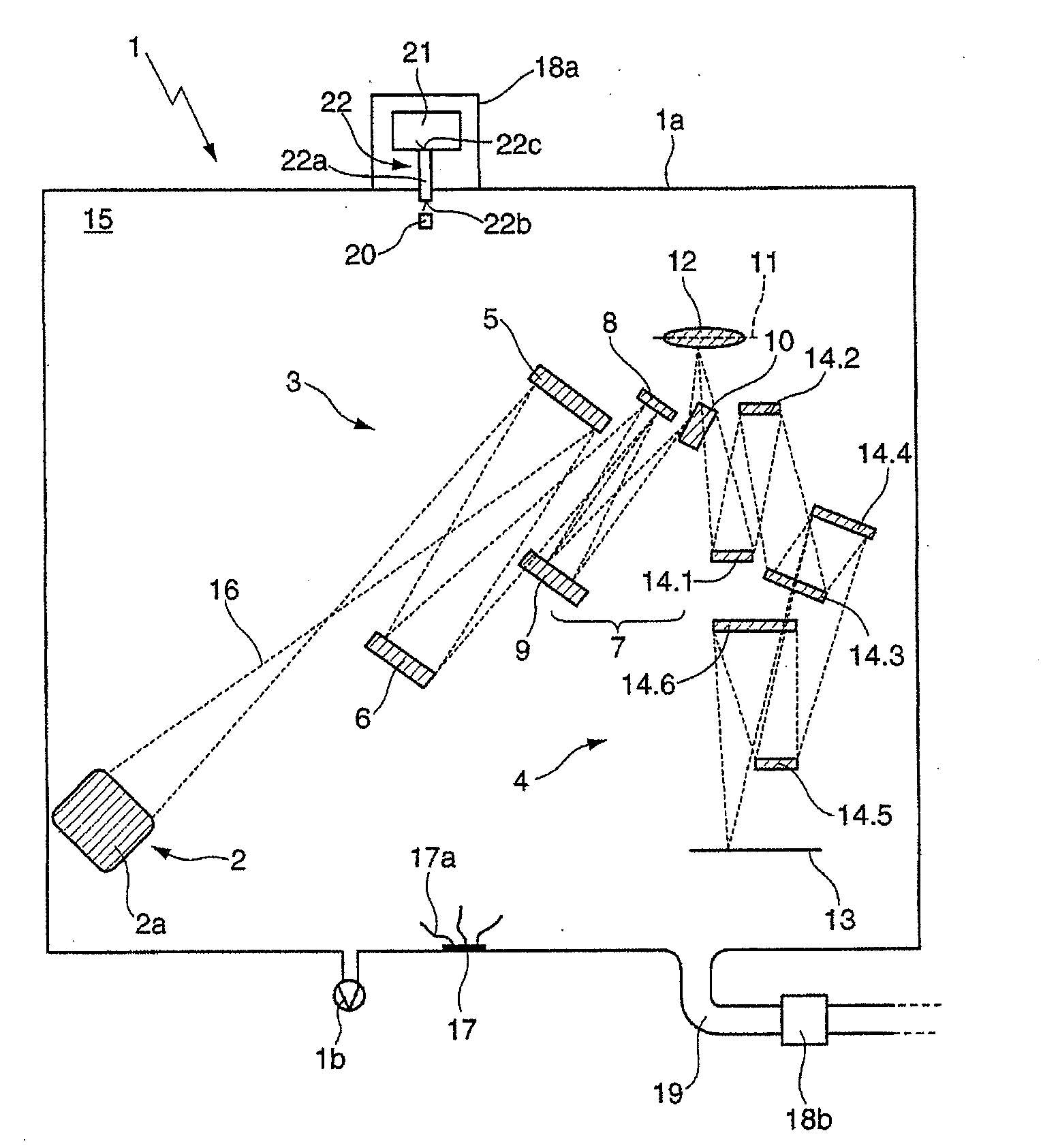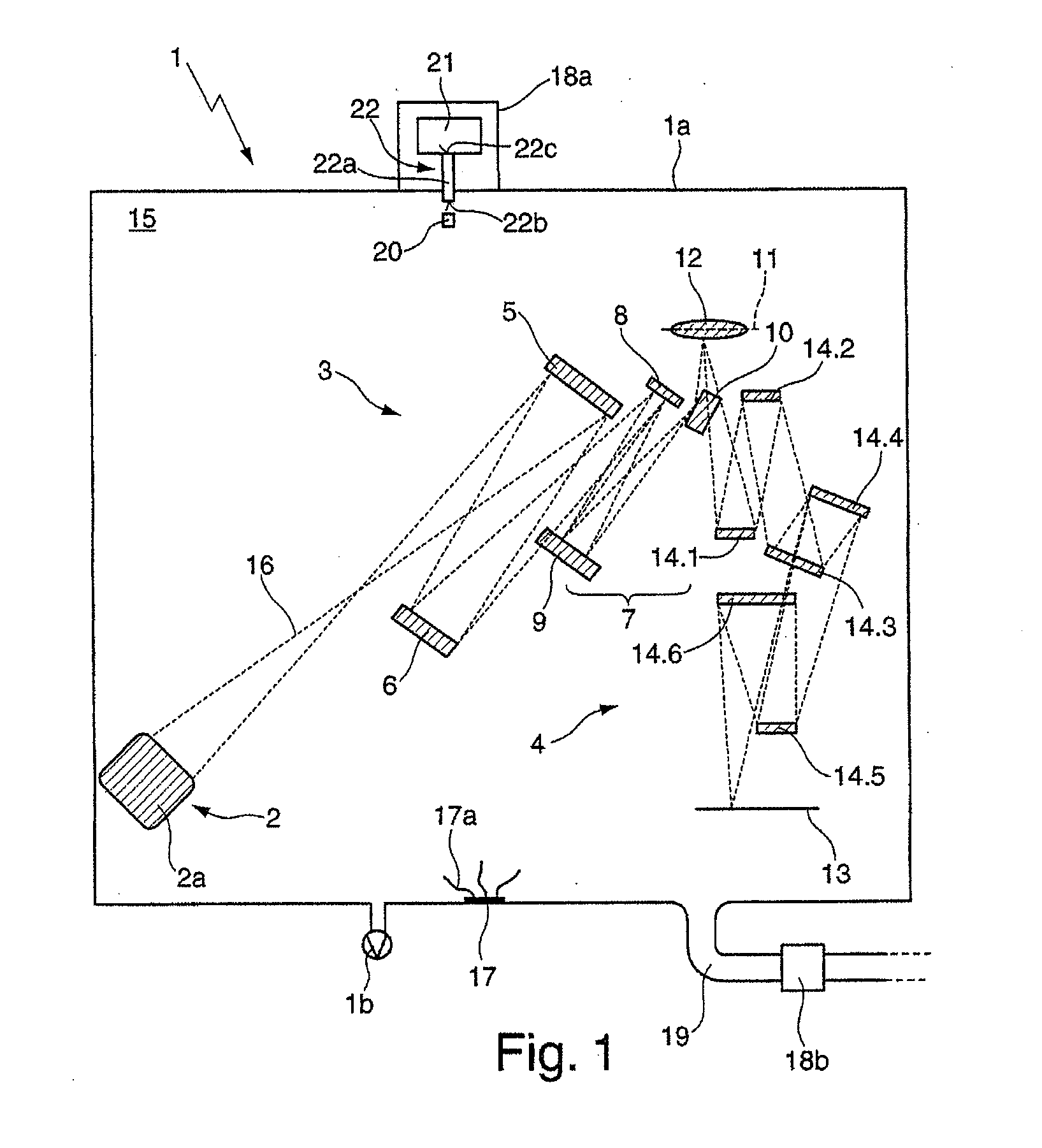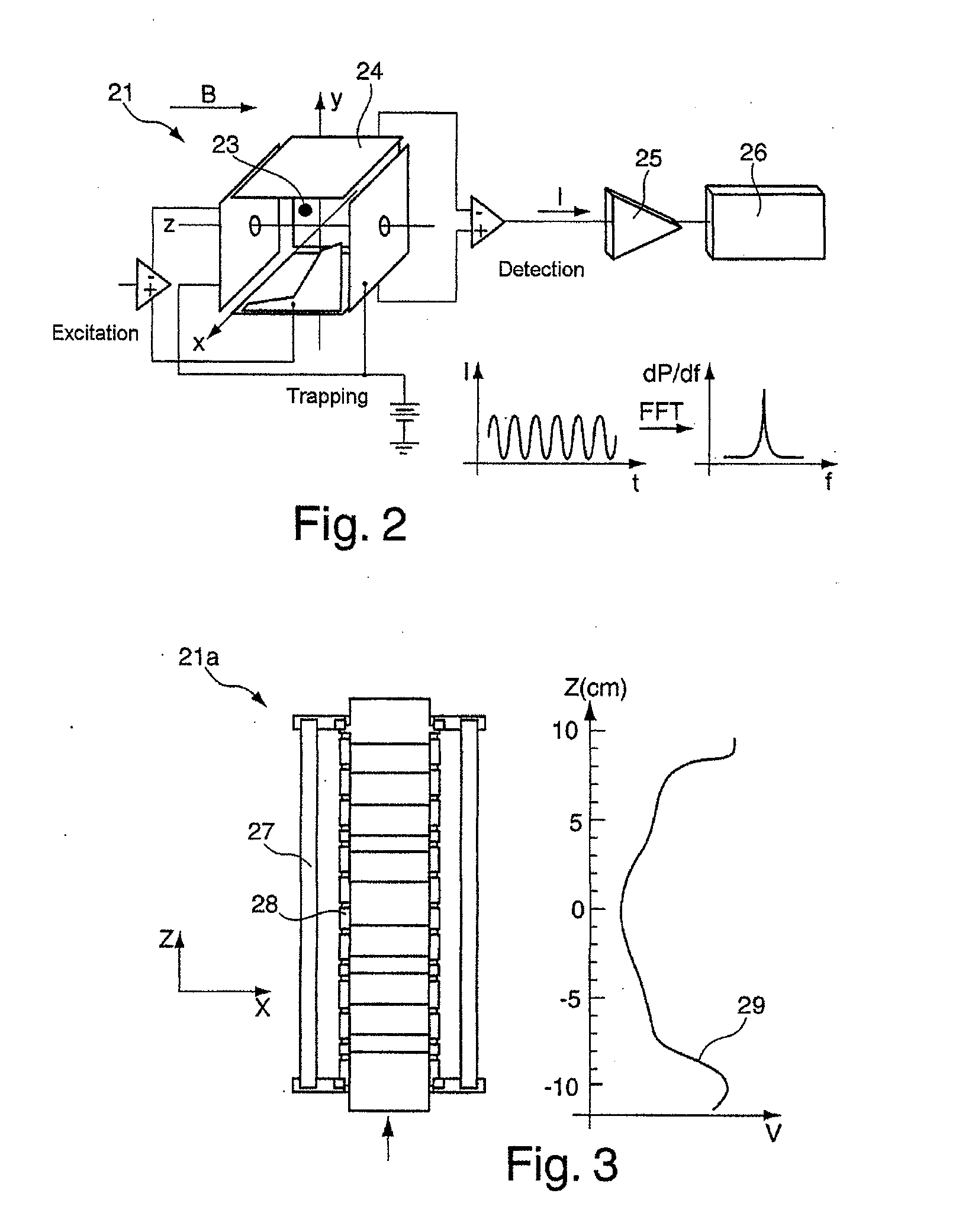Detection of contaminating substances in an EUV lithography apparatus
a lithography apparatus and euv technology, applied in the field of detection of contaminating substances in the euv (extreme ultraviolet) lithography apparatus, can solve the problems of contaminating substances that cannot be detected, the ion current of the residual gas spectrum shown therein is not normalized, and the multi-layer mirror life is limited
- Summary
- Abstract
- Description
- Claims
- Application Information
AI Technical Summary
Benefits of technology
Problems solved by technology
Method used
Image
Examples
Embodiment Construction
[0037]FIG. 1 shows a schematic illustration of an EUV lithography apparatus 1 having a housing 1a, to which a vacuum generating unit 1b (vacuum pump) is assigned. The housing 1a, in accordance with the optical function of the components arranged therein, is subdivided into three housing parts (not illustrated pictorially in FIG. 1), to be precise firstly into a first housing part having a light generating unit 2 comprising e.g. a plasma light source (not shown) and an EUV collector mirror 2a for focusing the illumination radiation.
[0038]Arranged in a second housing part adjacent thereto is the illumination system 3, which, following the beam course, has a mirror having field raster elements 5 and a mirror having pupil raster elements 6 as a light mixing device. A downstream group—acting as a telescope objective 7—of three mirrors, has a first and second mirror 8, 9, which are operated under normal incidence, and a third mirror 10, on which the light impinges under grazing incidence....
PUM
 Login to View More
Login to View More Abstract
Description
Claims
Application Information
 Login to View More
Login to View More - R&D
- Intellectual Property
- Life Sciences
- Materials
- Tech Scout
- Unparalleled Data Quality
- Higher Quality Content
- 60% Fewer Hallucinations
Browse by: Latest US Patents, China's latest patents, Technical Efficacy Thesaurus, Application Domain, Technology Topic, Popular Technical Reports.
© 2025 PatSnap. All rights reserved.Legal|Privacy policy|Modern Slavery Act Transparency Statement|Sitemap|About US| Contact US: help@patsnap.com



